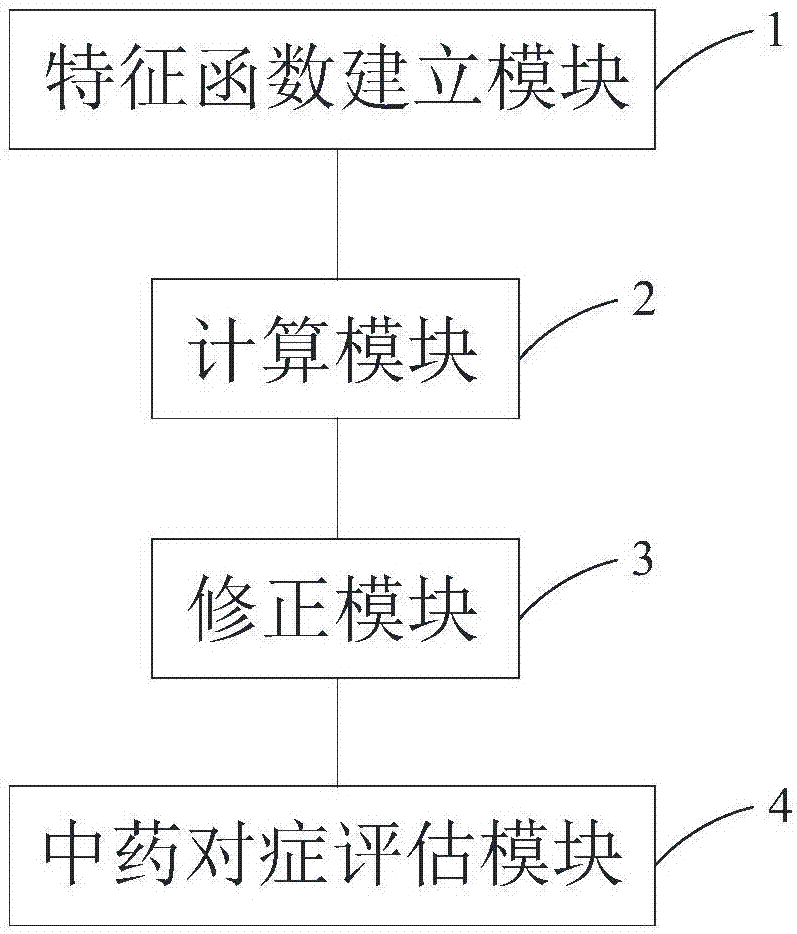Traditional Chinese medicine screening method and system based on partial connection number method
A screening method, a technique of the connection number method, applied in the fields of electrical digital data processing, special data processing applications, instruments, etc.
- Summary
- Abstract
- Description
- Claims
- Application Information
AI Technical Summary
Problems solved by technology
Method used
Image
Examples
Embodiment 1
[0043] Embodiment 1 clinical example
[0044] 1 Source: From January 2009 to January 2012, there were 202 cases recorded in the dermatology clinic and inpatient department of Yueyang Hospital of Integrated Traditional Chinese and Western Medicine affiliated to Shanghai University of Traditional Chinese Medicine, including 127 males and 75 females. Between the ages of 17 and 79, the average age was 42.70±14.65 years, and the course of disease was 4 to 360 months, with an average of 113.60±94.07 months. All cases were diagnosed as psoriasis vulgaris when they went to the doctor.
[0045] 2.1 Diagnostic criteria: All were diagnosed as psoriasis vulgaris (according to "Clinical Disease Diagnosis Based on Cure and Improvement Criteria", edited by Sun Chuanxing, Beijing People's Military Medical Publishing House).
[0046] 2.2 Exclusion criteria:
[0047] ①Having a history of fever of unknown origin within 2 months;
[0048] ② Systemic treatment, including hormones and immunosupp...
Embodiment 2
[0079] Embodiment 2 Chinese medicine screening system of the present invention
[0080] See figure 1 , figure 1 It is a schematic diagram of the traditional Chinese medicine optimization system of the present invention. Described Chinese medicine screening system comprises:
[0081] a) Feature function building module 1, used to establish the curative effect quaternary connection number of different symptoms; for example: calculate the quaternary connection number by the following formula: μ=a+bi+cj+dk, a corresponds to the percentage of recovery after symptomatic medication , b corresponds to the percentage of significant effect after symptomatic medication, c corresponds to the percentage of improvement after symptomatic medication, d corresponds to the percentage of ineffective after symptomatic medication, where the value intervals of i, j, and k are defined according to the clinical significance, and the improvement is set as Positive development, define that i takes a...
PUM
 Login to View More
Login to View More Abstract
Description
Claims
Application Information
 Login to View More
Login to View More - R&D
- Intellectual Property
- Life Sciences
- Materials
- Tech Scout
- Unparalleled Data Quality
- Higher Quality Content
- 60% Fewer Hallucinations
Browse by: Latest US Patents, China's latest patents, Technical Efficacy Thesaurus, Application Domain, Technology Topic, Popular Technical Reports.
© 2025 PatSnap. All rights reserved.Legal|Privacy policy|Modern Slavery Act Transparency Statement|Sitemap|About US| Contact US: help@patsnap.com



